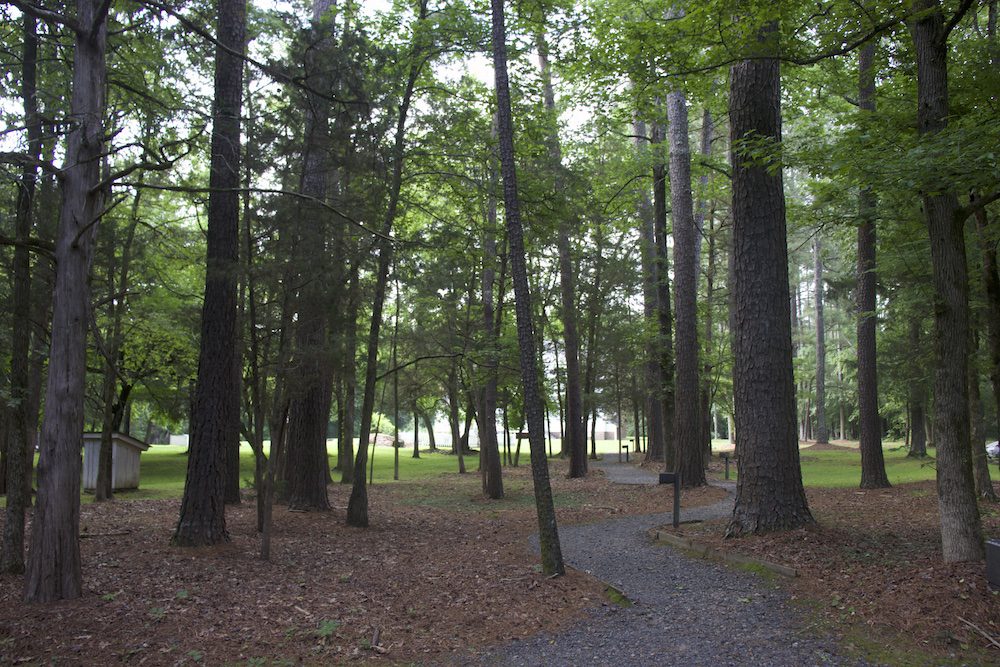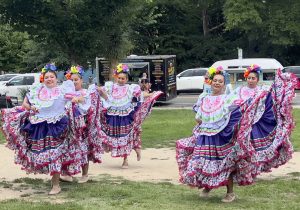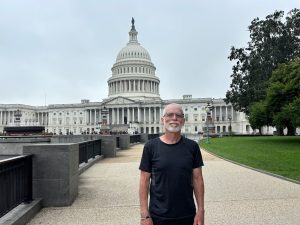The Union soldiers had come down Old Oxford Road, chasing Confederate soldiers out of Stagville Plantation. They arrived at Stagville’s Horton Grove, which at the time was home to some 900 enslaved people.
“They told my great aunt, ‘Fix us some food,’” Ricky L. Hart says, repeating a story passed down to him in his youth. “So, the soldiers had this long feast. In the end, the soldiers finished eating and drinking coffee, and they were like, ‘Y’all free.’”
That’s how enslaved people at Stagville, one of the largest slave plantations in North Carolina, learned that they had been freed, recalls Hart, 59, a Durham native and fifth-generation Stagville descendent.
On a balmy summer day, as Durham readies for the Juneteenth holiday, Hart discusses what emancipation meant to his relatives 157 years ago.
When they heard that the Union soldiers were coming, some enslaved people threw parties, including at Stagville. Others didn’t know what to make of the news, Hart says.
“Because, for six, seven, eight generations before you, the plantation was all you knew. You didn’t know what freedom was.”
Stagville is an immense property, he notes. Those forty-three square miles would’ve made fleeing a nearly impossible task.
“They didn’t have any concept of how big it was,” Hart says. “If you ran, you only ran for three or four miles. Then you stopped and walked. You still had 40 miles to go. So, you could be walking for weeks and still be on the site.”
And so, the Hart family stayed on after emancipation. Several members arranged share-cropping agreements with the Camerons. This guaranteed food for their families and offered the possibility of land ownership. The family resided in the Hart House—which Hart refers to as “number 13.”
When you arrive at Horton Grove, the Hart House is the first thing that you see. It stands out—the only painted house in the group adorned with a terracotta-colored metal roof. It was a multi-family home. Ricky Hart’s relatives cohabitated in the house in the early twentieth century.
“When you get upstairs, there’s a room to the right, and then there’s one to the left,” Hart says. “My grandfather, Willis and his family lived downstairs for a while. And his brother, Ephraim, lived upstairs with his family. So it’s like you got all these people living there. Your wife and your six children—all in one room.”
Hart’s uncle, Ephraim, was the last to leave the Hart House, departing in 1975 to resettle elsewhere. And long afterward, for ten years, Hart relatives held annual family reunions here. “I still got pictures and sign-in sheets… all kinds of stuff. The staff at Stagville were always glad to have us,” Hart says.
In 1976, the Liggett and Myers Tobacco Company, which owned the land after the Bennehans sold it, donated it to the state. This circumstance birthed Historic Stagville as a North Carolina State Historic Site, where the Hart name comes up again and again in the site’s “Emancipation Tours.”
***
The tours begin at the visitor’s center. To escape the clammy Carolina air, attendees trickle into a dimly-lit green shed. Among them are well-meaning parents, curious children and teenagers and an interpreter-in-training. The gift shop showcases books such as Nikole Hannah-Jones’ The 1619 Project and Harriet Jacobs’s Incidents in the Life of a Slave Girl, along with soaps, lotions and candles from a local black-owned business. Thumb-tacked grayscale portraits of Stagville inhabitants are accompanied by brief biographies of the residents.
Vera Cecelski, the site manager and guide, ushers the assembly outside to embark on the emancipation tour.
***
The tour starts at the Bennehan-Cameron family home, in the center of Stagville, a colonial framed structure with white columns, red-bricked chimneys and a gray, shingled roof.
Before the end of the Civil War, the Bennehan and Cameron families lived here, supervising slave activities and imposing cruel punishments. As the war drew to a close, for many enslaved people, freedom was a life or death wager. On a neighboring plantation, a young girl named Sarah witnessed Confederate soldiers threatening her family members, Cecelski says.
“She said they took each man in the yard, held them at gunpoint and asked them if they wanted to be free,” Cecelski says. “Sarah watched the murders of three of her uncles that day because they dared to tell these soldiers that they wanted their freedom.”
***
After emancipation, the Cameron family moved on from Stagville. But the name has not disappeared from the area. Towards the end of the tour, a participant asks, “So, a lot of the places in the Triangle with Cameron names come from this family? Like the Cameron Indoor Stadium at Duke?” The crowd giggles.
Cameron Indoor Stadium is actually named for a different Cameron family from outside North Carolina, Cecelski says. But the Cameron family that owned the Stagville plantation – that name persists, even as Confederate statues have fallen in Durham and on the UNC Campus.
“You can still see the Cameron name—probably the most prominent place is in Chapel Hill,” Cecelski says. “Cameron Avenue runs through campus and is named for Paul Cameron, who was the single largest slave-holder here at the time of the Civil War.”
***
Back at Horton Grove, Cecelski concludes the tour, standing in a grassy plot adjacent to Old Oxford Highway, a plot Ricky Hart remembers once was planted entirely in tobacco.
“When you leave today, whatever route you drive away from this place, you’re probably following one of the old roads or paths—roads that families took as they left this place and tried to find one where they could access true freedom,” Cecelski says. “So, I invite you to carry with you the following thought: if you head to almost any of the cities nearby—Durham, Raleigh—you’re heading to a place that has been shaped, in some way, by freed people.”
Ricky L. Hart, and so many others, she says, live to tell the tale.

On June 18, Historic Stagville, 5828 Old Oxford Highway, will hold its 15th annual Juneteenth commemoration. The site also will continue guided Emancipation Tours on June 19 and 25.
Above: Stagville descendant Ricky Hart, photo by Ana Young — The 9th Street Journal
Center and below: The Hart House in Stagville’s Horton Grove; glimpses of former residents on a Stagville bulletin board,;and paths lead away from Horton Grove. Photos by Maddie Wray — The 9th Street Journal








